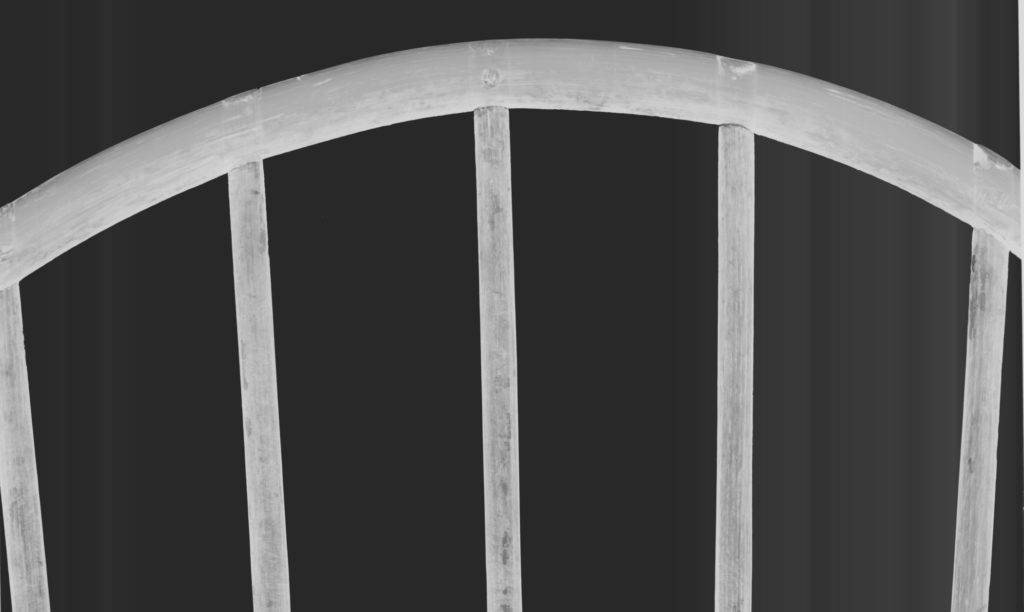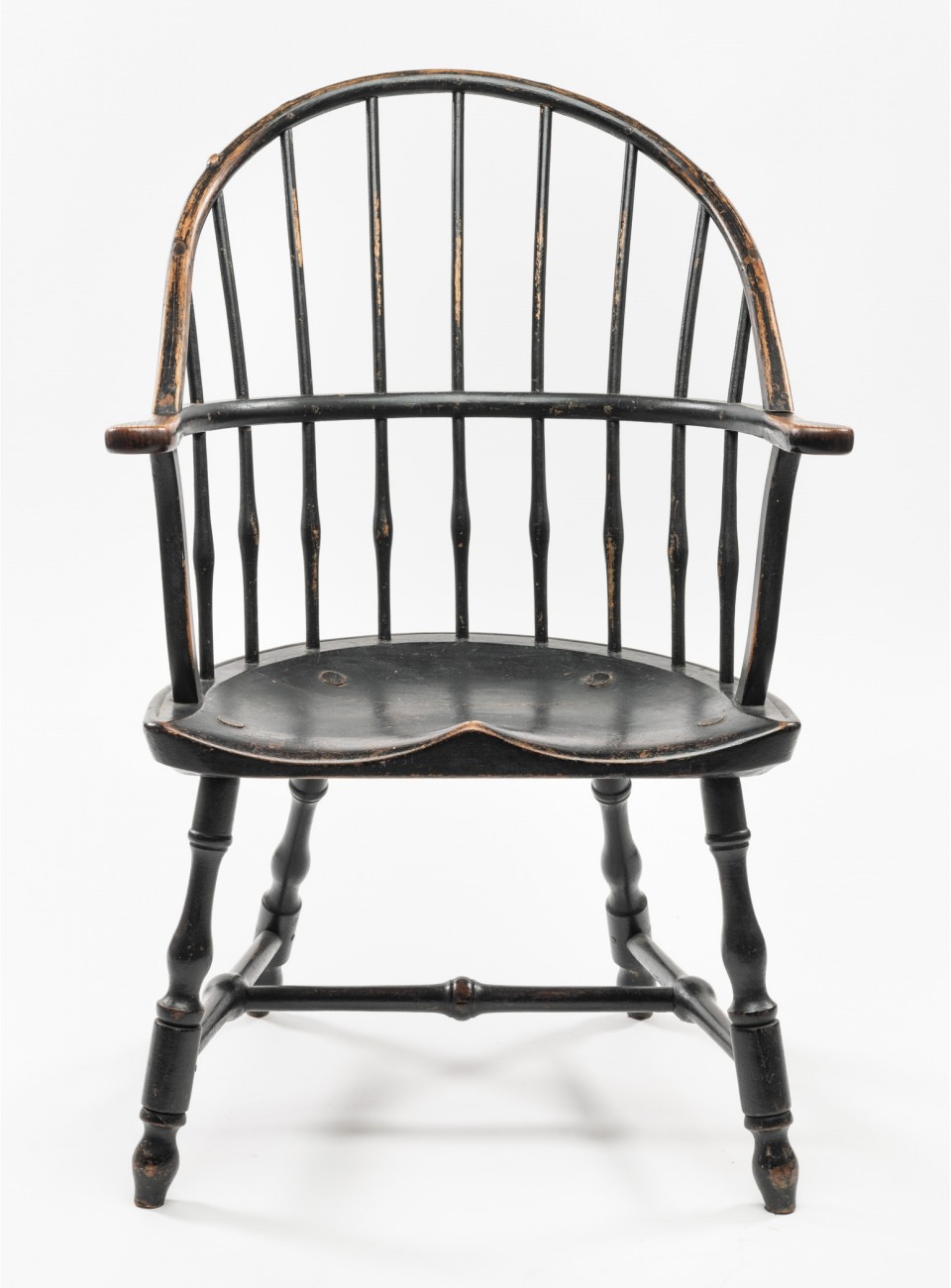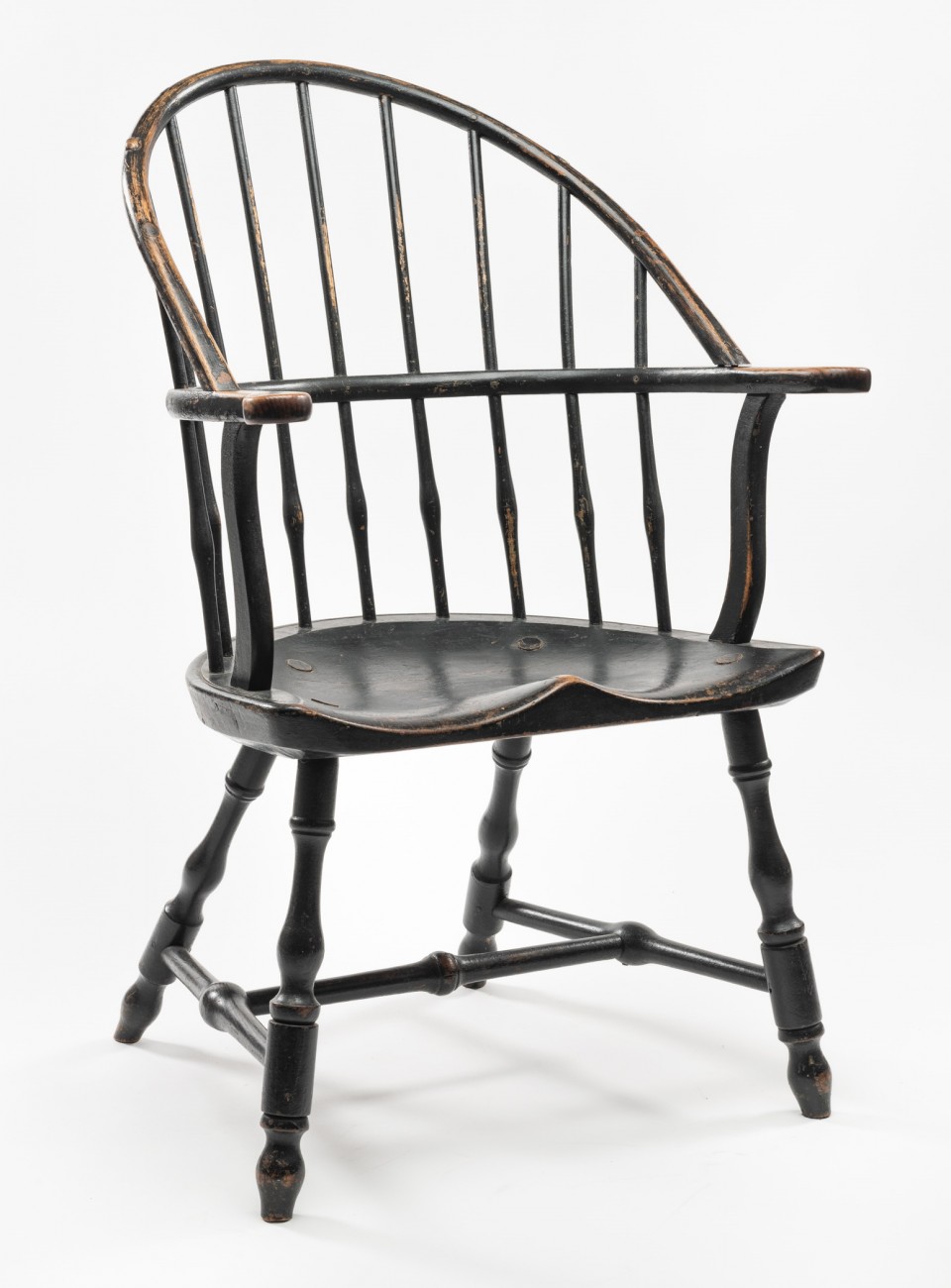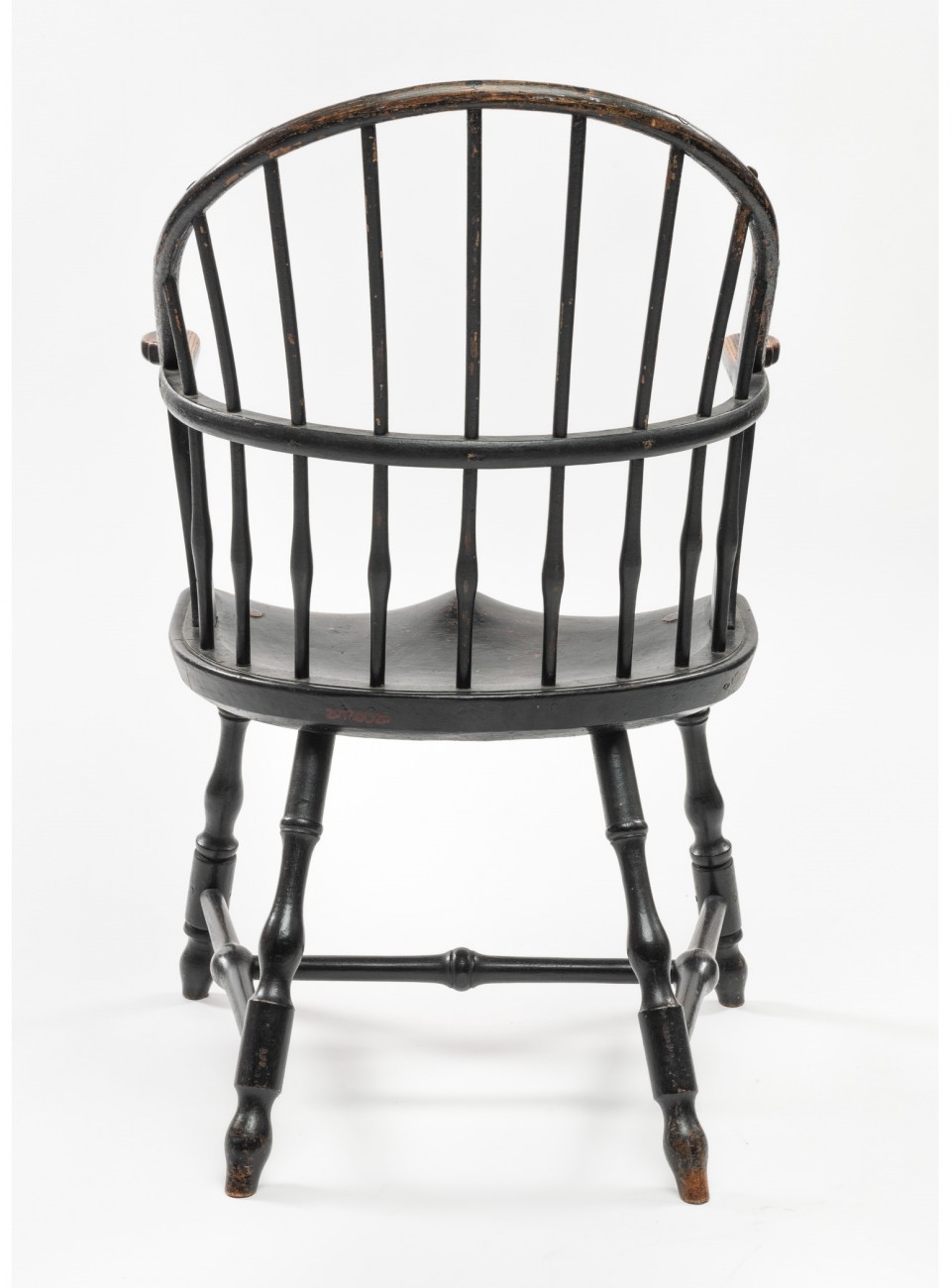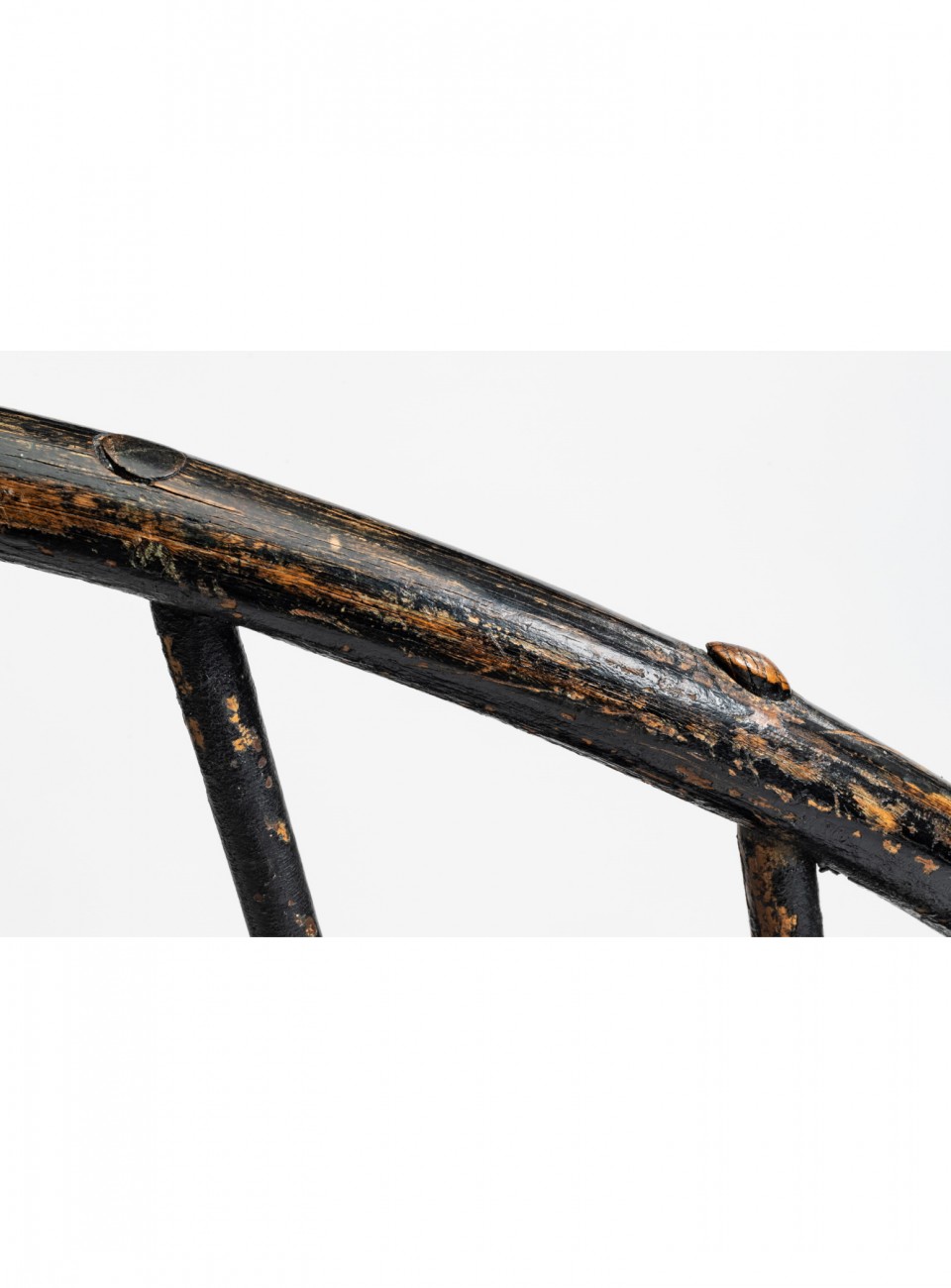Sack-back Windsor Armchair
Sack-back Windsor armchair
Providence, Rhode Island; 1770
Painted wood
Museum purchase with funds provided by the Henry Francis du Pont Collectors Circle 2017.0026
The Windsor chair is quintessentially colonial in style and could be seen as a stark contrast to midcentury modern forms. Yet its technology is similar to midcentury modern design in that it is admirably suited to low-cost, high-volume production. The chair employs turned spindles that are socketed into a solid wood seat that is shaped to fit the body. The Windsor could be assembled in pieces using woods sourced from different regions. This design technique was a precursor to mass production used in midcentury modern furniture. This modular construction is mirrored in the Saarinen 72 chair with its curved fiberglass back that is socketed into the seat of the chair.
Getting a solid material to curve is no easy feat. Each of the craftsmen who built Windsor chairs had to cultivate plasticity in the materials. For wood to curve, you need to heat it. To create the back of the Windsor chair, a craftsman applied steam to wood until it became flexible enough to bend. In an X-ray of this chair (see below), you can see the holes drilled through the top band, which holds the vertical rods that give the back additional strength.
The back of the upholstered 72 Saarinen chair is constructed using resin-based fiberglass, which was molded while hot to maximize its plasticity. As it cooled, it hardened and held its shape. An X-ray of the resin-based fiberglass shell chair (below) allows us to see the suspended fibers that add strength to the fiberglass once it is formed.
